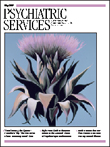Girls of Tender Age: A Memior
When I first perused Girls of Tender Age , I was curious whether its contents would hold up to the abundant praise from various authors and reviewers that is printed on its cover. However, by page 15, I was hooked. The story the author tells about her childhood years in Hartford, Connecticut, is quite remarkable. She grows up in a middle-class family with an older brother who she says is likely autistic—many years before autism was recognized as a discrete disorder. Much of her family life revolves around satisfying his needs in order to control his behavior, and she is expected to adhere to this code and to watch him when their parents cannot be home. This robs her of much of a normal childhood. In addition, when she is ten she has to cope with the murder of one of her best friends and with the way it rocked her small community. These two stories are very cleverly interwoven, which lends tension and depth to this memoir. For example, the similarity she points out among the literal silence needed in her house in order to accommodate her brother's sound sensitivity and the silence which was wrapped around the murder by the adults in her community makes a wonderful parallel.
The latter half of the book deals with the author's investigations into the murder as an adult and with her attempts to reconstruct the two years that are lost to her after her friend's death. She had subconsciously repressed many of her memories from this time in her young life. This part of the book, although not quite as fast paced, is fascinating. However, I found myself wishing in both parts of the book for more details of how these events affected the author emotionally, both as a child and as an adult. One can speculate that the environment of emotional silence that surrounded her childhood resulted in an emotional silence in her adulthood as well, and watching this process makes this book quite interesting.
For this reason and others, anyone in the mental health field would benefit from reading this well-written memoir. Although the portrayal of her character development may be inadvertent by the author, it is interesting nonetheless. The experience of her friend's murder gives food for thought, but the impact of her brother's developmental disorder on her family and how he was treated by them is just as thought provoking. Anyone with an interest in childhood development disorders should enjoy this book as well. I heartily recommend this book as well worth the read.



